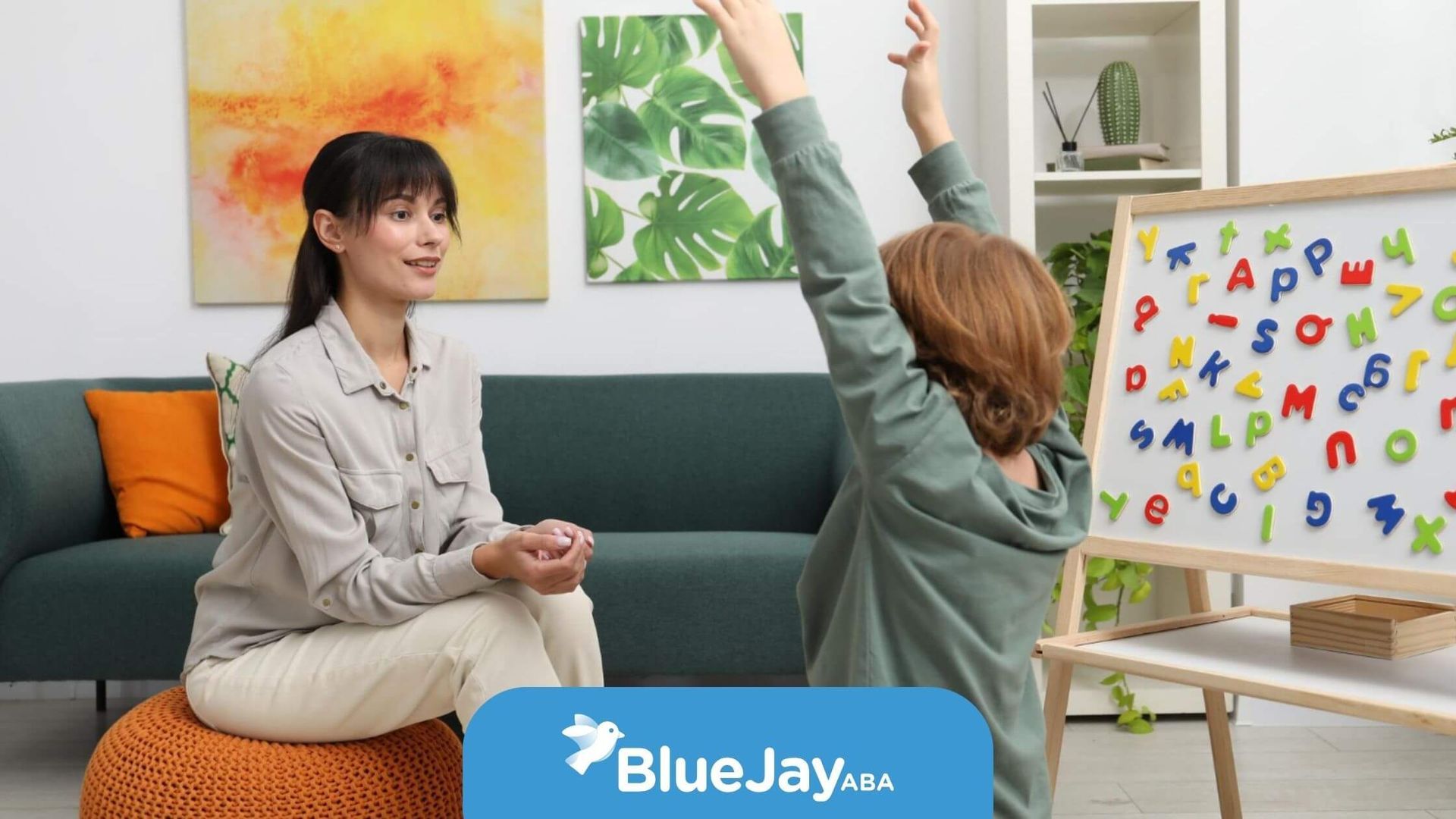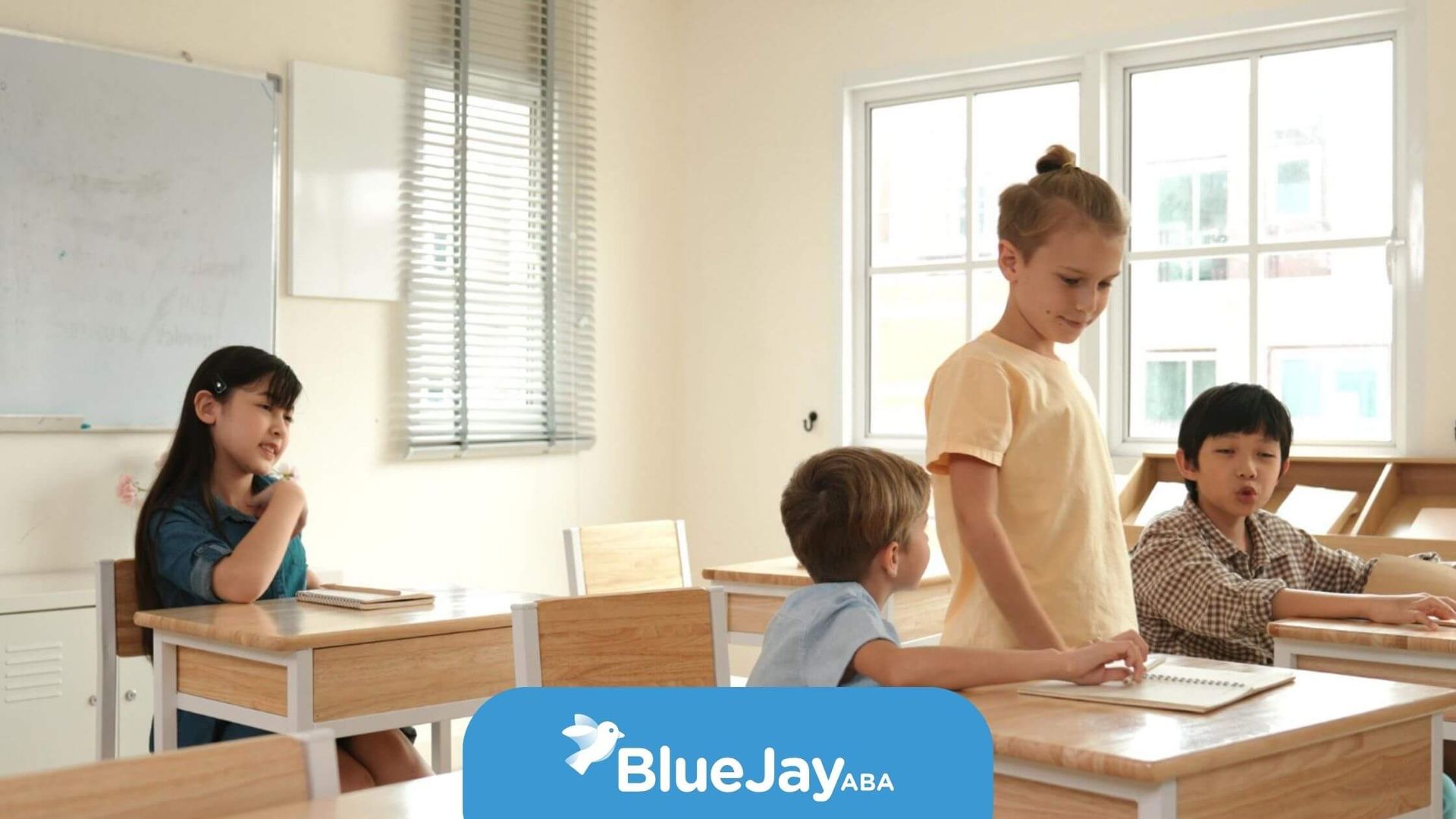How ABA Therapy Builds Executive Function Skills in Children
Have you ever noticed how some kids have a hard time starting homework, staying organized, or switching between tasks?
These are signs of executive function challenges, something I see often in my ABA therapy work. Executive function is like the brain’s control center—it manages focus, memory, and self-control. When these skills are weak, everyday routines can feel overwhelming.
Fortunately, ABA therapy provides structured, hands-on strategies to help build them.
Executive Function: The Brain’s Management System
Before we dive into how ABA helps, it’s important to understand what executive function actually is. These cognitive processes act like the brain’s “management system,” helping us organize, make decisions, and regulate our emotions.
When these skills are underdeveloped, everyday life becomes harder to navigate—especially for children.
What Is Executive Function and Why It Matters
I often describe executive function as the CEO of your brain. It’s what allows you to plan, stay organized, think before you act, and adjust when something changes.
These skills—like working memory, impulse control, and cognitive flexibility—help children follow instructions, switch between tasks, and stay calm under pressure.
When these skills are strong, life feels smoother. When they’re weak, everything from schoolwork to friendships can feel harder.
Why Executive Functions Are Essential for Childhood Development
In my experience, executive function skills are the backbone of a child’s learning and emotional growth. They shape how kids pay attention, problem-solve, and build social connections. Without them, frustration can build quickly—leading to academic struggles and social difficulties.
Early, consistent support through ABA therapy helps children strengthen these skills over time, giving them a solid foundation for future success.
Recognizing Executive Function Challenges
Understanding when a child might be struggling with executive function is the first step toward helping them. Many of the behaviors that parents find challenging—like disorganization or impulsivity—stem from difficulties in this area, not a lack of effort.
Common Signs of Executive Dysfunction
In my work, I often see children who:
- Have trouble starting or finishing tasks
- Lose track of their belongings
- Struggle to manage time
- Act impulsively or interrupt conversations
- Forget directions easily
- Have difficulty switching between activities
These aren’t signs of laziness—they’re indicators that the child’s executive system needs structured support.
Impact on Learning and Social Skills
When executive function is weak, school and friendships can feel like uphill battles. Children may fall behind on assignments or struggle to keep up with changing expectations. Socially, they might misread cues or react emotionally.
In therapy, I help kids learn strategies to handle these challenges—building not just academic skills, but also emotional resilience and self-confidence.
How ABA Therapy Builds Executive Function
ABA therapy is one of the most effective ways to build executive functioning skills because it focuses on measurable, step-by-step learning.
I use this structured approach to teach children how to plan, organize, and regulate their behavior in real-world settings.
Why ABA Is So Effective
What makes ABA so powerful is its focus on practice and reinforcement. Instead of just talking about executive function, we do it—breaking big goals into small, achievable steps.
When a child successfully completes a task, they’re rewarded, which motivates them to keep building on that success.
Targeted Executive Skills in ABA
Through ABA, we can target a wide range of skills such as:
- Task initiation: Learning to start tasks independently
- Impulse control: Waiting for a turn or pausing before reacting
- Flexible thinking: Adjusting when plans change
- Working memory: Holding and using information
- Planning and organization: Managing materials and following routines
Each plan is personalized to meet the child’s needs, and early intervention often yields the best long-term outcomes.
Practical ABA Techniques for Executive Functioning
When I design programs for improving executive function, I focus on strategies that make abstract concepts—like “planning” or “organization”—tangible and easy to practice.
These tools create structure, reduce frustration, and help children gain independence.
Task Analysis and Visual Supports
I often use task analysis, which breaks a large task (like getting ready for school) into smaller, more manageable steps. This makes routines less intimidating and easier to master.
Visual supports—like checklists, picture schedules, and cue cards—are also game changers. They provide consistent reminders of what to do next, helping children stay focused and calm.
Creating a Supportive Environment
Small environmental adjustments can dramatically improve a child’s ability to focus. I often recommend:
- Setting up a quiet, organized workspace
- Labeling materials and toys
- Reducing distractions
- Establishing predictable routines
These tweaks create a calm, structured space where executive function can flourish.
Reinforcement, Goal Setting, and Self-Monitoring
In my sessions, positive reinforcement is key. When a child completes a task, follows directions, or manages frustration, I immediately celebrate that success. Over time, this consistency builds motivation and self-confidence.
I also teach goal-setting and self-monitoring, encouraging children to track their own behavior. This promotes independence and helps them take ownership of their growth.
Measuring and Adjusting Progress
One of the things I love about ABA is how data-driven it is. Every goal, every strategy, and every success is tracked carefully so we can see what’s working and what needs adjusting.
Assessment Tools and Tracking Methods
I often use tools like the Behavior Rating Inventory of Executive Function (BRIEF) and the Behavior Assessment System for Children (BASC), combined with direct observation. This allows me to monitor progress across settings—at home, in school, and during therapy sessions.
Individualizing Plans Based on Progress
No two children are alike, which is why I constantly refine each program. If a child masters a skill, we move to a more advanced one. If they’re struggling, I adjust the strategy—maybe add visual aids or break tasks into smaller steps. This flexibility keeps therapy engaging and effective.
Collaboration: The Key to Consistent Progress
I’ve learned that true progress in executive functioning comes from teamwork. When parents, teachers, and therapists all use consistent strategies, children make faster and more lasting gains.
Working with Families and Teachers
I always make sure families are involved in the therapy process. Parents know their child best, and their input is essential. I also collaborate closely with teachers to bring these strategies into the classroom—whether it’s using visual schedules, simplifying assignments, or creating positive reinforcement systems.
School-Based ABA Support
When I provide school-based ABA therapy, I work directly in the classroom to support executive skills where they’re most needed. Techniques like token systems, role-playing, and structured routines help children practice planning, cooperation, and emotional control right in their learning environment.
The Results: Independence, Confidence, and Growth
Seeing a child gain independence is one of the most rewarding parts of my job. Over time, children begin to take initiative, manage their time, and handle transitions more smoothly.
Academic and Social Growth
Improved executive function leads to better academic performance—completing assignments, staying organized, and engaging in group projects. But it also transforms social experiences. With stronger emotional control and flexible thinking, children can navigate friendships and interactions more comfortably.
Beyond Autism: Broader Applications of ABA
While ABA therapy is best known for supporting children with autism, I’ve seen it help individuals with ADHD, learning disabilities, and even brain injuries. The principles of behavior analysis—structured teaching, reinforcement, and data-driven progress—are universally effective in building executive function skills.
Tailoring ABA to Each Individual
Personalization is the heart of good ABA therapy. Before starting any program, I conduct a thorough assessment to understand each person’s strengths and challenges. This ensures that every goal, strategy, and reward system fits their unique needs.
No cookie-cutter programs—just individualized plans that grow with each child.
In my experience, enhancing executive function through ABA is one of the most powerful ways to support a child’s development. These skills aren’t just about staying organized—they shape how children learn, connect, and feel capable in the world.
At Blue Jay ABA, we believe that every child deserves the chance to feel confident, capable, and understood. Developing strong executive functioning skills—like planning, organization, and self-regulation—can make a world of difference in how children learn, communicate, and navigate daily life.
Through personalized, evidence-based ABA therapy, we help children turn these important skills into lifelong habits. Whether it’s learning to manage routines, focus in school, or handle emotions more effectively, our team is here to support every step of the journey.
We proudly serve families across North Carolina with:
- Home-based ABA therapy for comfort and personalized learning at home
- School-based ABA therapy to support success and participation in the classroom
- Telehealth ABA therapy for flexible, convenient sessions from the comfort of home
We also offer ABA parent training to help families continue progress at home, along with comprehensive ABA assessments and autism evaluations for families seeking answers and personalized guidance.
If you’re ready to help your child build stronger executive skills, gain independence, and thrive in all areas of life, we’d love to partner with you. Contact Blue Jay ABA today to learn more about how our dedicated team can help your family grow together.
Frequently Asked Questions
How does ABA therapy help with executive function skills in children?
ABA builds executive skills through structured practice and reinforcement. Using techniques like task analysis and visual supports, we teach children to plan, focus, and self-regulate.
Can ABA interventions for executive function be used outside of autism?
Yes! These strategies are highly effective for individuals with ADHD, learning challenges, or other conditions affecting organization and attention.
What improvements can families expect from ABA programs focused on executive functioning?
Families often see more independence, better emotional control, and improved organization. Over time, children become more confident and capable across all areas of life.
Sources:
- https://www.pearsonassessments.com/en-us/Store/Professional-Assessments/Behavior/Behavior-Assessment-System-for-Children-%7C-Third-Edition-/p/100001402
- https://www.apa.org/depression-guideline/behavior-assessment-system-children.pdf
- https://psycnet.apa.org/getdoi.cfm?doi=10.1037/t73087-000
- https://www.autismspeaks.org/executive-functioning
- https://pmc.ncbi.nlm.nih.gov/articles/PMC4869784/
Related Posts






